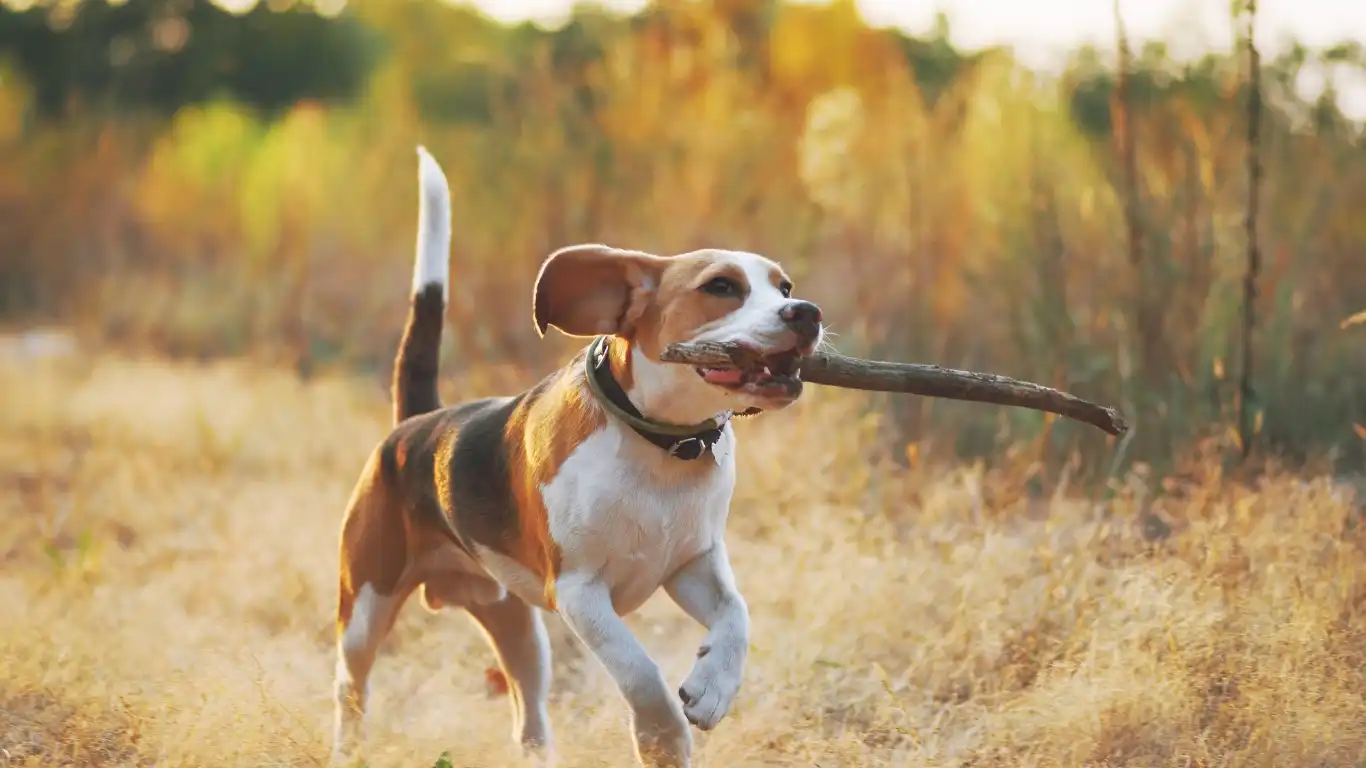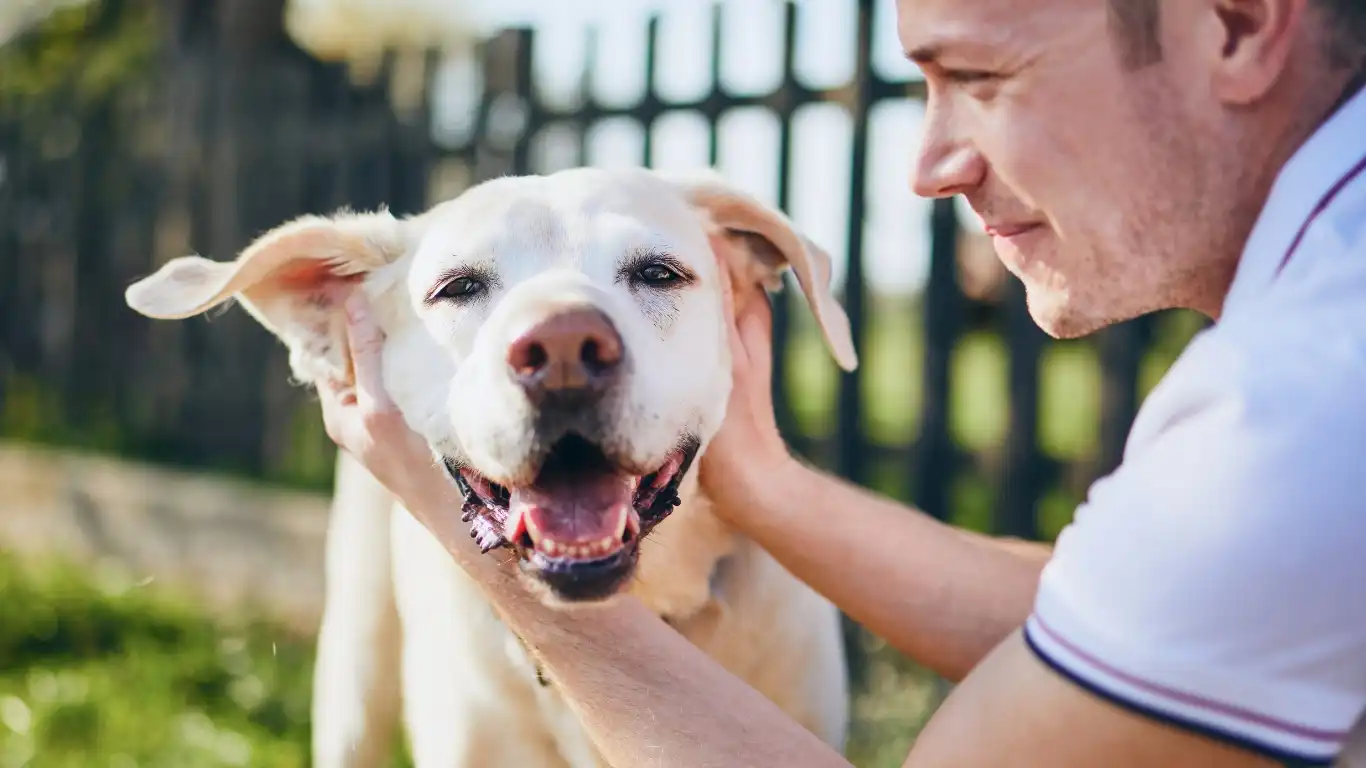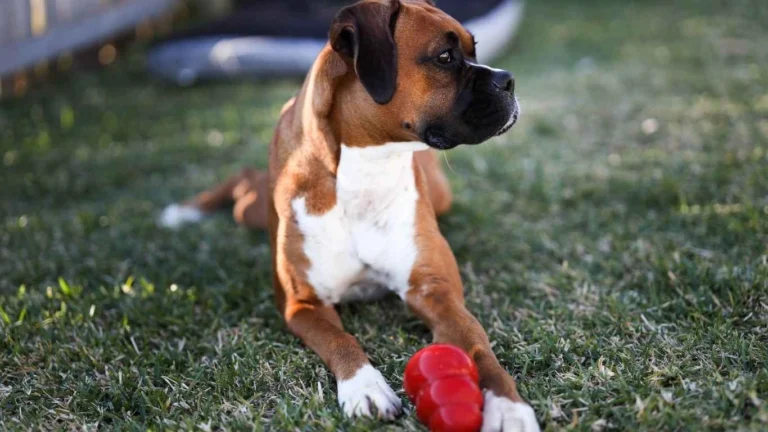Best Ways to Relieve Dog Constipation Naturally Without Medication
If you’ve found yourself Googling the best ways to relieve dog constipation naturally, I feel you. As a veterinary technician who’s spent years in the trenches—especially in the world of pet nutrition—I’ve had more conversations about constipated pups than I can count. Whether it’s the poor guy who hasn’t pooped in two days or the senior dog who’s straining like he’s pushing out a brick, I’ve seen it all. And let me tell you, nothing tugs at the heart more than watching your fur baby struggle. The good news? There are safe, simple, natural ways to help your dog find some sweet digestive relief—and I’m here to walk you through them, one tail wag at a time.
What Exactly Causes Dog Constipation?

Constipation in dogs might sound simple, but it can have many root causes. As someone who’s spent hours explaining this to worried pet parents, I can say this: it’s rarely just “they ate something weird.” Although… sometimes that is the case (looking at you, Labrador retrievers).
- Dehydration: This is a biggie. Not drinking enough water leads to dry, hard stools that are tough to pass.
- Lack of Fiber: Just like in humans, fiber keeps things moving. A diet low in quality fiber can slow the gut way down.
- Inactivity: Dogs who lounge all day (senior dogs or those recovering from surgery) are more prone to constipation.
- Obstruction: Eating bones, toys, or random backyard finds (been there) can lead to a blocked colon.
- Medical Conditions: Hypothyroidism, neurological issues, or even kidney disease can contribute.
Understanding the “why” is half the battle. Once you know what’s going on, you can target your efforts a lot better—and hopefully avoid those vet trips at 2am.
Recognizing the Signs: Is Your Dog Really Constipated?

This might seem obvious, but constipation doesn’t always look like you’d expect. One of my clients once thought her pup had diarrhea—turns out he was constipated and just straining repeatedly. Who knew, right?
Common Symptoms Include:
- Straining to poop, but nothing’s coming out (or just small, hard pellets)
- Skipping bowel movements for more than a day or two
- Whining or pacing around the yard
- Licking their rear more than usual
- Loss of appetite or signs of discomfort when touched near the belly
Quick side note from the field: If your dog is vomiting, seems lethargic, or has a bloated abdomen, it’s time to skip the home remedies and go straight to your vet. Better safe than sorry.
Best Ways to Relieve Dog Constipation Naturally (Tried-and-Tested)

Alright, now onto the part you’re really here for. These are the go-to methods I recommend to dog parents almost daily—and honestly, many of these I’ve used on my own dog when she’s a little backed up (looking at you, Sadie, queen of the couch).
1. Add Canned Pumpkin (Plain, Not Pie Mix!)
This is the holy grail of home remedies. Canned pumpkin is packed with soluble fiber and moisture, which helps bulk and soften the stool. Just a tablespoon or two (depending on your dog’s size) mixed into their food can work wonders. It’s gentle, natural, and most dogs love the taste.
2. Hydration is Everything
If your pup isn’t drinking enough water, their colon will suck all the moisture out of the stool, making it harder to pass. I always tell clients to try flavored ice cubes (low-sodium bone broth is a hit!) or even add water or broth to their kibble. It’s a sneaky way to up their fluid intake without a fight.
3. Exercise to Stimulate the Bowels
Movement gets things moving. A long walk or a good game of fetch can help encourage peristalsis—that’s the natural motion of the gut that moves things along. I once had a dachshund patient who wouldn’t poop until we did laps around the clinic. True story.
4. Olive Oil or Coconut Oil
A teaspoon of oil can act like a lubricant for the digestive tract. Don’t go overboard—too much and you’ll swap one problem (constipation) for another (diarrhea). I usually suggest no more than ½ teaspoon for small dogs or 1 teaspoon for bigger breeds, once a day until things improve.
5. High-Fiber Vegetables
If your dog’s used to a commercial diet, chances are they’re missing out on fresh fiber. I love adding steamed green beans, carrots, or even a little sweet potato. Just make sure it’s plain—no butter, salt, or garlic. One of my clients swore by a “green bean medley” for her senior pug, and honestly, it worked.
6. Probiotics
Gut health = good poop. A quality canine-specific probiotic can help balance their digestive system. I always recommend checking with your vet for brand recs, but generally speaking, a sprinkle on their food once a day can do a lot more than you think.
Stick around, because there’s still more to cover when it comes to understanding and managing canine constipation from the inside out. But even starting with one or two of these tips can make a huge difference.
More Natural Remedies That Actually Work

If you’ve already tried a few of the basics from earlier and your pup’s still doing the potty dance with no success, don’t panic—there are still more natural tools in the toolbox. Over the years working in vet clinics, I’ve found that some of the most overlooked remedies are also the most effective. It’s all about listening to your dog’s body, being consistent, and sometimes thinking a little outside the box.
7. Belly Massage and Tummy Rubs (Yes, Really)
I know, it sounds like some Pinterest-level advice, but hear me out. Gentle abdominal massage can help stimulate movement in the intestines—especially if your dog’s already relaxed and comfortable. I usually start with light circular motions just behind the rib cage and work down toward the hips. It’s soothing for them, and it gives you a chance to feel if there’s any bloating or tension that needs vet attention. Some dogs even fall asleep mid-massage (my pit mix is one of them—true diva energy).
8. Slippery Elm Powder
This one’s an old-school herbal remedy that’s earned its place in the modern pet wellness world. Slippery elm acts as a mucilage—it forms a soothing coating along the digestive tract and can help both with constipation and occasional diarrhea. It’s best mixed into wet food or water. Just make sure you’re using pet-safe formulations and not grabbing the first one off a human health shelf.
9. Aloe Vera Juice (With Caution)
Pure, food-grade aloe vera juice (not the topical gel!) can be used in very small amounts to help lubricate the GI tract. I’ve only recommended this in select cases and always with a vet’s okay. It’s powerful stuff, and while it can help, you definitely don’t want to overdo it. Start tiny—like 1/4 teaspoon for small dogs. And never give aloe latex, which can be toxic to pets. When in doubt, skip it or call your vet first.
How Diet Impacts Dog Constipation Long-Term

This part’s close to my heart because nutrition is my thing. I’ve seen dogs go from sluggish, bloated messes to energetic, regular poopers just by tweaking their diet. It’s honestly one of the most powerful (and underrated) ways to prevent constipation from becoming a chronic issue.
Consider Switching to a High-Quality, Digestible Diet
Let’s be real—some commercial kibble is basically fast food for dogs. If your pup’s struggling with regularity, the first thing I usually suggest is switching to a more digestible, nutrient-rich option. Look for whole food ingredients, named meat proteins, and added prebiotic fiber. Avoid fillers like corn, soy, and animal by-products. The difference can be night and day.
Raw or Lightly Cooked Diets (If Appropriate)
Some dogs do phenomenally well on raw or home-cooked diets—especially those with sensitive stomachs. I had a boxer client who was constantly constipated on dry food. We moved her to a lightly cooked, balanced plan (with guidance from a board-certified vet nutritionist), and within two weeks, she was pooping like clockwork. These diets take more effort, sure, but they can be total game-changers when done correctly.
Fiber: The Good, The Bad, and The Furry
Not all fiber is created equal. Some dogs need more insoluble fiber (like bran or veggies) to help bulk things up, while others respond better to soluble fiber (like pumpkin or oats), which helps soften things. I usually recommend experimenting with both in small amounts to see how your dog reacts. And always, always introduce changes gradually. Trust me—your carpets will thank you.
When It’s More Than Just Constipation

Here’s the honest truth: Sometimes constipation is a red flag for something more serious. As someone who’s worked the emergency shift and seen the “oops-we-waited-too-long” cases, I have to say—know when to throw in the towel on home remedies and get to the vet.
Red Flags to Watch For:
- Vomiting: Especially if it’s paired with a swollen belly or complete lack of appetite.
- Straining with no results: If your dog keeps trying to poop but can’t, that could signal an obstruction.
- Lethargy: Low energy or hiding behavior can mean your dog’s uncomfortable or even in pain.
- Bloody stool or mucus: Could indicate inflammation, infection, or something worse going on.
One case I’ll never forget involved a senior shepherd who hadn’t pooped in four days. The owners were trying pumpkin and olive oil, but it turned out she had a mass pressing on her colon. It was heartbreaking—but catching it when we did probably gave her a few more good months. Moral of the story? Trust your gut. And if something feels off, get it checked.
Consistency Is Everything (Pun Totally Intended)
Managing dog constipation naturally isn’t just about quick fixes—it’s about long-term habits and paying attention to your dog’s rhythm. I always tell pet parents: once you figure out what works for your pup, stick with it. Dogs thrive on routine, and their digestive systems are no different.
Tips to Keep Constipation from Creeping Back:
- Set a feeding schedule: Same time every day helps regulate bowel movements.
- Keep them active: Daily walks, even short ones, can help avoid sluggish digestion.
- Monitor water intake: Use a pet water fountain or flavor it if needed to keep them drinking.
- Track their poop habits: It sounds weird, but knowing what’s “normal” makes it easier to spot when something’s wrong.
As someone who lives and breathes this stuff (literally… some days, thanks to dogs and their bodily functions), I promise—it gets easier once you know what to watch for. You’re not alone in this, and neither is your pup. You’re already doing the right thing just by being here and learning.
Real-Life Cases: What Worked (and What Didn’t)

Okay, let’s get a little real here. I’ve worked with hundreds of dogs over the years—tiny Chihuahuas with diva attitudes, senior Golden Retrievers with sensitive stomachs, even a Great Dane who had zero awareness of how big he actually was. And let me tell you, when it comes to the best ways to relieve dog constipation naturally, results can vary from pup to pup. But the goal is always the same: comfort, relief, and a happy tail wag at the end.
One of my most memorable cases? A sweet little beagle named Max. His owner brought him in thinking he had a blockage, but it turned out Max was just chronically dehydrated and eating a low-moisture, high-carb kibble. We swapped his diet, added in some canned pumpkin and probiotic sprinkles, and boom—regular as a clock in under a week. On the flip side, there was a senior Yorkie who just didn’t respond to diet changes alone. We had to introduce gentle stool softeners and a mobility routine, and that did the trick. It really is about treating the individual, not just the symptoms.
Natural Supplements That May Help (When Used Properly)

Let’s talk about supplements. While I’m all for food-first solutions, there are some great natural products out there that can give your dog’s digestive system a much-needed nudge—especially when paired with a solid diet and hydration plan. But—and I can’t stress this enough—always check with your vet before starting anything new. What works wonders for one dog might not be right for another.
Natural Options Worth Exploring:
- Digestive Enzymes: Help break down food more effectively, especially for dogs on processed diets.
- Psyllium Husk: A natural soluble fiber that helps form soft, bulky stools (a little goes a long way).
- Probiotic Blends: Look for strains like Lactobacillus acidophilus and Bifidobacterium animalis, both of which are shown to support gut health.
- Licorice Root or Marshmallow Root: Gentle herbal supports for inflammation in the digestive tract—used sparingly and under guidance.
I’ve seen a combination of psyllium and probiotics totally transform dogs that had chronic constipation issues. One bulldog in particular used to come in every month for enemas—after a consistent supplement routine and switching to a hydrating diet, he hasn’t needed one in almost a year. His owner still sends me Christmas cards, and honestly, that’s the best kind of follow-up.
Preventative Care: Keeping Things Flowing Year-Round
By now, we’ve gone over a whole toolbox of natural remedies and adjustments you can make. But the real win? Preventing the issue from coming back. Prevention is where I see long-term success, and it’s also where your dog starts to feel better every day—not just when something’s wrong.
Simple Preventative Strategies:
- Stick to a predictable routine: Dogs are creatures of habit, and a consistent schedule supports their digestive system.
- Rotate fiber sources: One day pumpkin, another day green beans or sweet potato—keep it interesting and balanced.
- Stay active: Whether it’s morning walks, agility, or backyard zoomies, movement equals gut motility.
- Hydration hacks: Broth ice cubes, wet food toppers, water fountains—whatever it takes to keep water intake up.
- Regular vet checks: Especially for senior dogs or those with past GI issues—monitoring organ function is key.
Prevention is also where a lot of that “extra experience” I’ve gained comes into play. I know which dogs are at risk just by looking at their coat, posture, or even their poop (yep, it’s a gift). If you ever feel unsure, just take a photo of the stool and ask your vet—yup, poop pics are 100% normal in our world!
Resources I Trust
As a vet tech who’s all about evidence-based care and natural options, I always encourage pet parents to dive deeper—but to make sure they’re learning from trustworthy sources. Here are a few I regularly recommend:
- PetMD – Great for quick lookups and general pet health guidance.
- AKC – Their section on dog health and nutrition is surprisingly thorough.
- NIH – For scientific studies on herbal remedies and gut health (yes, even for pets!).
- Health – Occasionally features pet wellness topics that bridge human and animal care.
If you’re looking into specific diets or supplements, I also suggest asking your vet for recommendations based on your dog’s breed, age, and medical history. What works for a high-energy husky might be too much for a sleepy bulldog.
Disclaimer
This article is for informational purposes only and does not replace professional veterinary advice, diagnosis, or treatment. Always consult your veterinarian before starting your dog on new foods, supplements, or treatments, especially if they have an existing medical condition or are currently taking medications.
That said, as someone who’s knee-deep in dog nutrition daily, I genuinely hope this guide empowers you to make smart, compassionate choices for your furry friend. Helping dogs feel better naturally is one of my favorite parts of the job—and you’re now armed with everything you need to make it happen.





